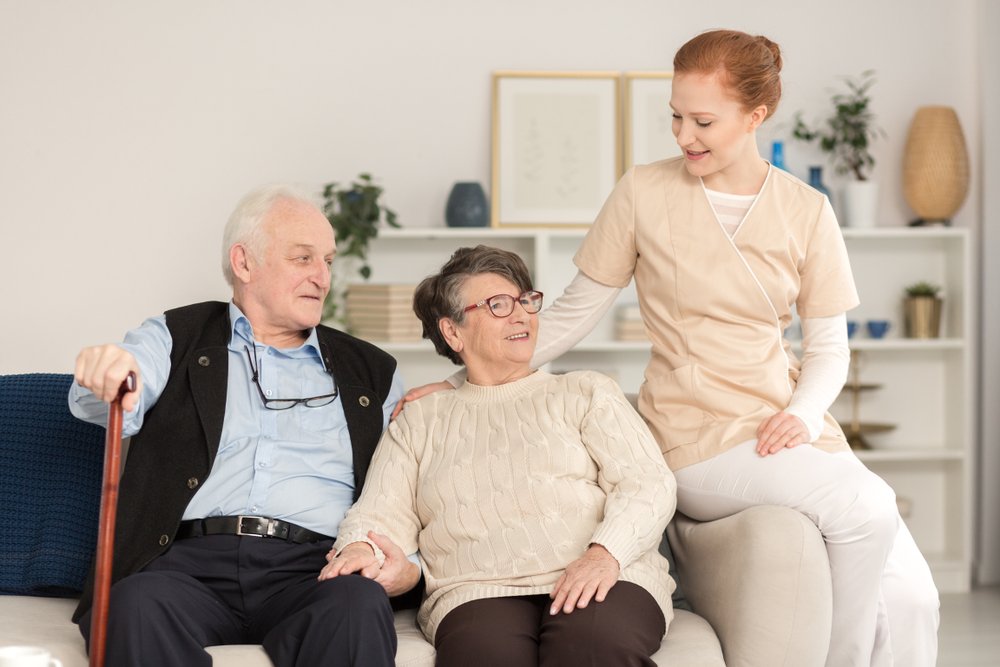Many families are adamant about providing as much community care for loved ones with dementia or Alzheimer’s disease as they can. Delaying placement in a long-term care facility (or possibly avoiding it entirely) is occasionally an option for those with sufficient means, a sound care plan, and a strong care team. Making a dementia patient’s home setting safe and secure requires a lot of consideration. Creating a Safe and Comfortable Home Environment for Seniors
To anticipate worries and potential threats, dementia carers must attempt to put themselves in the shoes of their loved ones. In the end, it is impossible to change the signs or actions of a dementia sufferer. Instead, changes must be made to the care recipient’s home environment to lessen stress for both the carer and care recipient as well as to reduce physical risks. When the condition worsens, the home must be modified to accommodate shifting symptoms and capabilities.
The stresses and accidents can be reduced by anticipating and addressing physical and mental health hazards. Moreover, for this, consider the following points:
- Identifying and Removing Home Risks
- Home Safety
- Dementia-Friendly Bathrooms
- Alzheimer’s Disease Seniors’ Bedroom Changes
- Living at Home with Dementia
Identifying and Removing Home Risks
Limiting access to dangerous areas and tools/equipment is the first step in adapting a house or apartment for dementia-affected patients. The basement, the garage, and the tool shed are frequently dangerous parts of the house.
As their condition worsens, seniors with dementia frequently have progressively poorer judgment, particularly when it comes to distinguishing between safe and harmful situations. Doors leading to places with tools, ladders, landscaping equipment, chemicals, fuel, and cleaning supplies should be locked. Even when utilized appropriately, everything that could be hazardous should always be secured. Child-proof locks can be installed on cabinets and doorknob covers can be used on doors that enable access to areas that cannot be locked for practical reasons, even though these devices might not be successful in preventing all seniors.
The fundamental safety measures that families providing care for dementia patients should take around their houses are comparable to childproofing, even though dementia patients are not children and shouldn’t be treated as such. It is preferable to err on the side of caution if there is any doubt about whether something could be dangerous.
Home Safety
Locking up power tools and cleaning materials sounds sensible, but elders may have trouble with even common home furniture. Caregivers regard rugs as fall dangers, whereas most people consider them as home decor. Electric cords should be covered beneath furniture or walls to prevent falls.
Dementia patients may have eyesight issues. Alzheimer’s frequently impairs color and depth perception. Dark items are hard to see and understand. Black doormats can look like big holes in the floor. Contrasting colors help elders see space and depth in their homes. Patients can navigate safer by contrasting the colors of flooring, furniture, bedding, and window coverings.
Dementia carers also worry about wandering, which is risky because there are usually no warning indications. Deadbolts at the top or bottom of outside doors will prevent seniors from getting lost. But, locking exits that your loved one can’t open can be dangerous. To avoid accidents, create a fire escape strategy and supervise regularly.
Elderly persons are reluctant to change their homes, especially as they grow less adaptable. Caregivers may improve home safety for loved ones by offering stern yet gentle explanations.
Learn More: 10 Signs Death Is Near Dementia
Dementia-Friendly Bathrooms
Seniors and carers have specific obstacles in bathrooms due to their slick, harsh materials and monotonous colors. Bathroom grab bars prevent falls. These bars help carers and patients balance and bathe.
Caregivers often struggle to bathe dementia patients. Seniors ignore their care due to anxiety, discomfort, confusion, and fear, but gentle support and the correct senior care devices like grab bars can make them feel comfortable, confident, and modest when showering and bathing.
Shower floors and bathtubs can benefit from non-skid mats and other solutions. Make sure these items won’t move and cause a fall. Those who fear falling or tiring easily may prefer bathing in a shower chair. Handheld shower heads also let patients and carers control water flow. Keep water heaters below 120 degrees and water temperatures tolerable. Cover bathroom pipes to avoid burning.
Again, contrasting colors help seniors with impaired vision navigate the restroom and stay independent. An all-white bathroom may make a white toilet hard to see. A colorful toilet seat and lid or cloth lid cover might help elderly individuals use the restroom.
Alzheimer’s Disease Seniors’ Bedroom Changes
Seniors should retreat to a cozy bedroom. Several types of dementia cause sleep troubles, so it’s crucial to create a comfortable atmosphere.
Reading and watching TV requires adequate lighting. Nightlights can benefit dementia patients who are afraid of the dark. If your loved one needs to use the bathroom at night, there should be enough light. Dim lighting can cause hallucinations in dementia patients, especially sundowners.
If overnight bathroom journeys are risky or difficult, a carer may need to learn how to use a bedpan, urinal, or bedside commode. If a senior has occasional sleep incontinence, buy a strong waterproof mattress protector and several sets of linens. Night-time communication should make. Many caretakers answer calls for aid with transfers, toileting, dressing, and other requirements with an intercom, baby monitor, security camera, or bell.
Learn More: Fracture Bedpan Placement
Living at Home with Dementia
Both dementia patients and their carers may find daily living to be extremely stressful, but with careful planning, many worries and potential dangers can be foreseen and addressed. Seniors with Alzheimer’s disease will be able to live in their homes for as long as possible if a safe living environment is found. An occupational therapist can make further suggestions for products and home adaptations that are catered to a loved one’s particular needs if necessary.
Nothing, however, can substitute the necessity of closely monitoring dementia-affected patients. Even with meticulous preparation and housing modifications, it is still possible for elders to hurt themselves while being watched over by a caregiver. Also, a single dementia carer cannot provide round-the-clock care without endangering their own physical and emotional well-being. A loved one may eventually need to be transferred to a long-term care facility, such as a memory care unit or a skilled nursing facility, to protect their safety.







